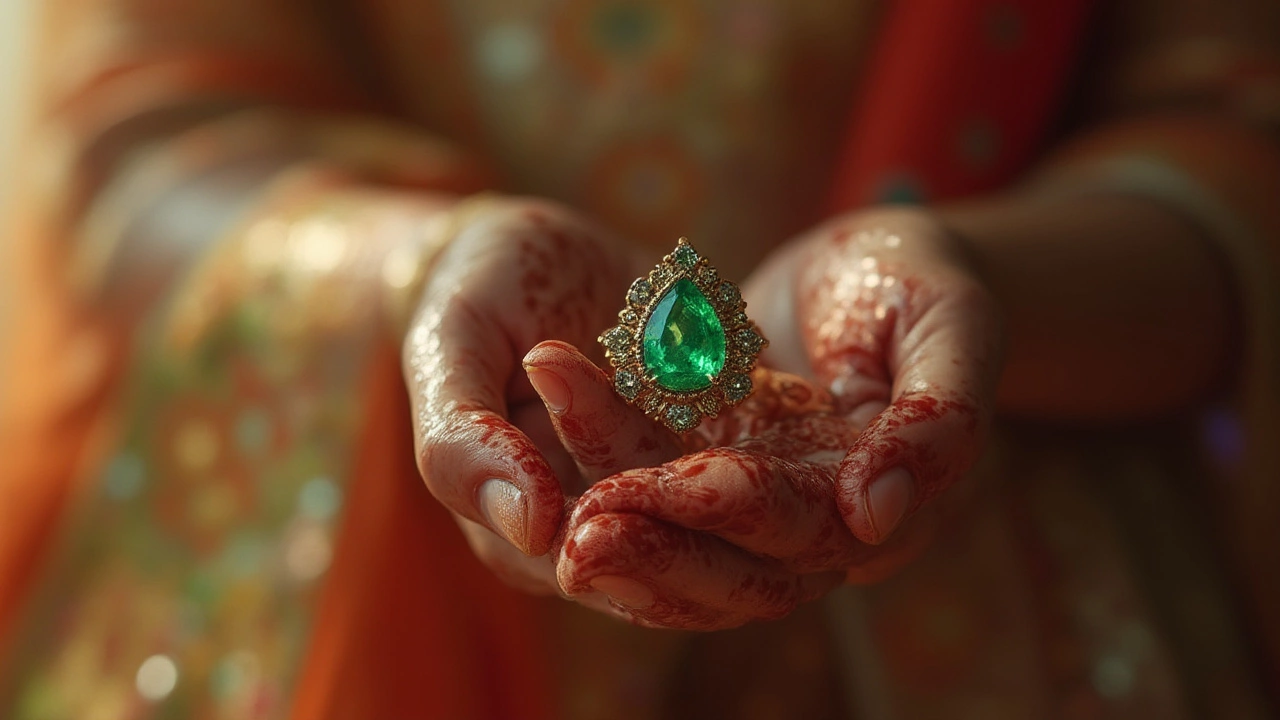
Emeralds are loved for their vibrant green, but are they tough enough for daily wear? Learn why emeralds need extra care, risks of wearing them daily, and tips to protect your jewelry.
When thinking about gemstone durability, the ability of a gemstone to resist scratches, chips and everyday wear when set in jewelry. Also known as gemstone toughness, it matters whether you wear a ring daily or keep a pendant for special occasions. Below we unpack the core factors that decide how long a stone stays sparkle‑perfect.
First up is hardness, a measure of a material’s resistance to scratching. The industry uses the Mohs scale, a ten‑point scale ranging from talc (1) to diamond (10) to rank gemstones. For example, sapphire and ruby sit at 9, making them excellent for everyday rings. Emeralds score a 7.5–8, but their natural inclusions can cause chipping, so setting matters. Quartz, amethyst and topaz sit around 7, good for occasional wear but vulnerable to scratches from harder surfaces. Knowing where a stone lands on the Mohs scale tells you how much daily abuse it can handle.
Next, consider the jewelry setting, the way a gemstone is held in a piece of jewelry. A prong setting leaves most of the stone exposed, which highlights brilliance but also increases the chance of a stone snagging or being knocked off. Bezel settings wrap the metal around the stone’s edges, adding protection for softer gems like opal or amber. Channel and pavé settings embed many tiny stones in a metal track, distributing impact across a larger area and reducing individual stone stress. Choosing the right setting aligns the stone’s hardness with the intended wear pattern.
Even the toughest gem can suffer if you skip maintenance, regular cleaning and proper storage to prevent buildup and accidental damage. A soft, lint‑free cloth and mild soap water work for most hard stones; ultrasonic cleaners are fine for sapphire and diamond but can damage porous gems like turquoise. Store each piece separately in a padded pouch or a compartmentalized box to avoid stone‑on‑stone contact. Periodic professional inspections catch loose prongs or wear on the metal that could jeopardize a stone’s security.
Synthetic gems often mimic the hardness of their natural counterparts but can differ in internal stress patterns. Lab‑grown sapphire, for instance, generally matches the 9 on the Mohs scale, yet some batches show micro‑fractures that make them slightly more prone to chipping under sudden impact. When budgeting, weigh the cost benefit of synthetic versus natural but remember that durability depends on the crystal’s quality, not just its origin.
Daily wear introduces another variable: scratch resistance versus impact resistance. A stone like quartz may resist scratches from a kitchen counter but can still crack if hit by a hard object. Conversely, a diamond’s exceptional hardness means scratches are rare, but its cleavage planes make it vulnerable to sharp blows. Understanding this trade‑off helps you pick the right gem for the right occasion—harder stones for rings you wear all day, softer stones for occasional earrings or pendants.
All these pieces—hardness, setting, care, origin and usage patterns—interlock to form the bigger picture of gemstone durability. By matching a stone’s natural toughness with a protective setting and committing to regular maintenance, you keep the sparkle alive for years. Below you’ll find a curated set of articles that dive deeper into each of these angles, from choosing the best setting for delicate gems to DIY care routines that protect your favorite pieces.

Emeralds are loved for their vibrant green, but are they tough enough for daily wear? Learn why emeralds need extra care, risks of wearing them daily, and tips to protect your jewelry.